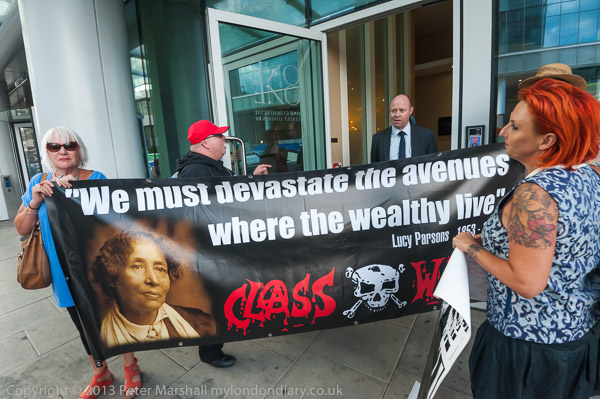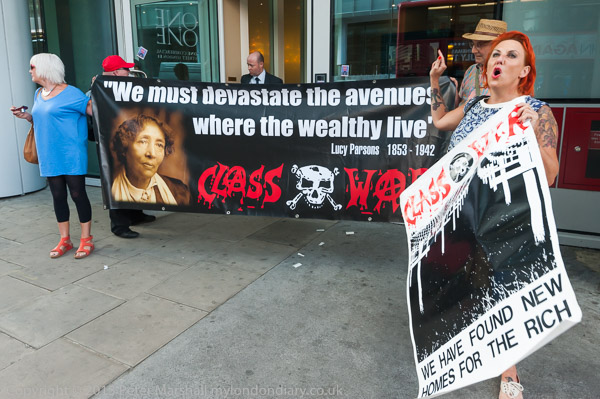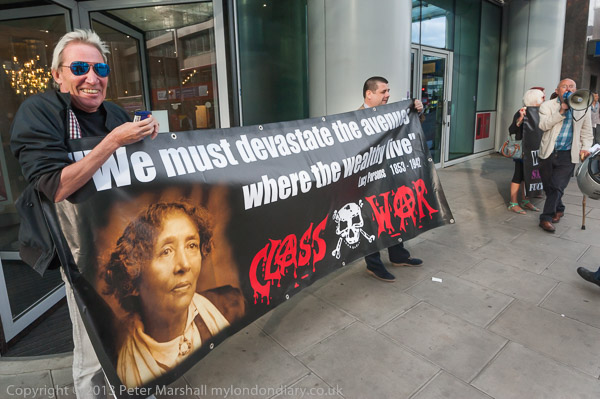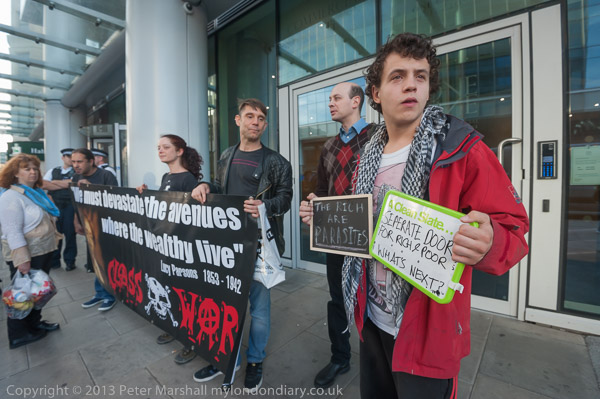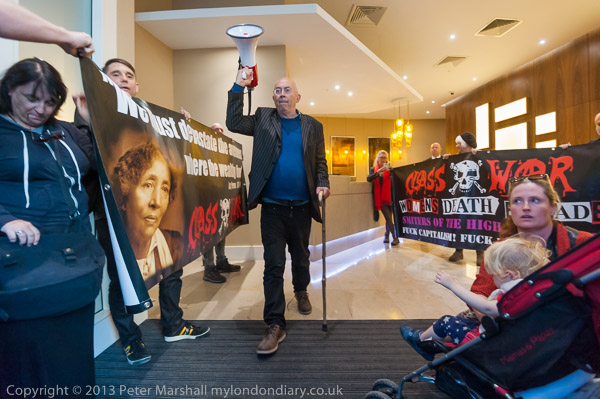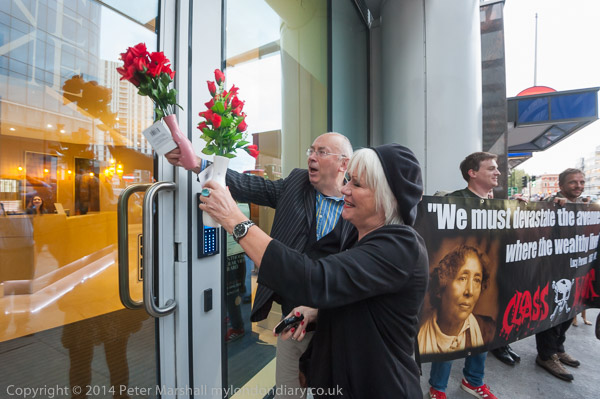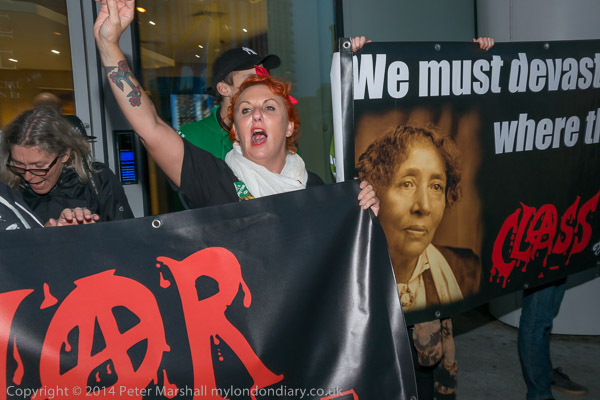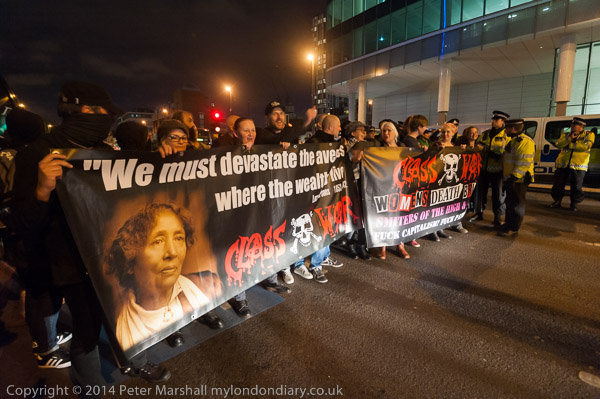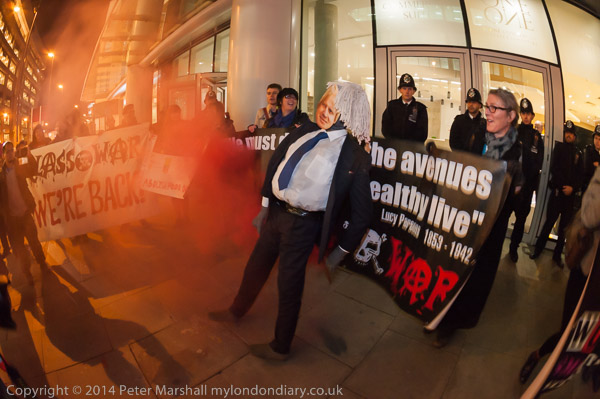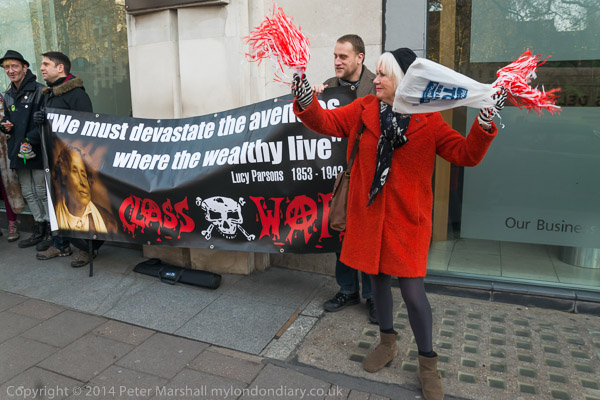LSE Resist – Working Class, Kidbrooke & Cleaners: in September 2016 then LSE research fellow Lisa McKenzie and a couple of students organised a series of discussions, films, lectures and exhibitions in the 3 day campus-wide 3-day free ‘Resist: Festival of Ideas and Actions’. The festival explored how political resistance is understood within academic research, the arts, grassroots activism campaigns, student debate and mainstream politics.
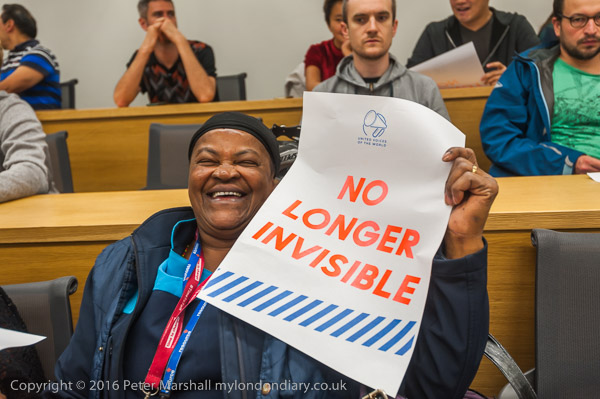
As a part of this festival LSE cleaners began a campaign for parity of treatment with other workers at the LSE. I had contributed some protest pictures to be used in publicity for the festival and attended some of the events on 28-29th September 2016.
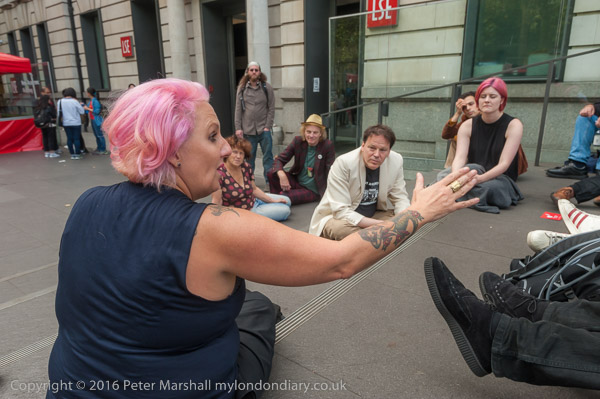
The success of this festival was perhaps one of the reasons why Dr McKenzie was not given a further contract at the LSE. She has since worked at Middlesex University, Durham University and the University of Bedfordshire and is Board Chair of the Working Class Collective.
Working Class debate at LSE Resist – Wednesday 28th September 2016
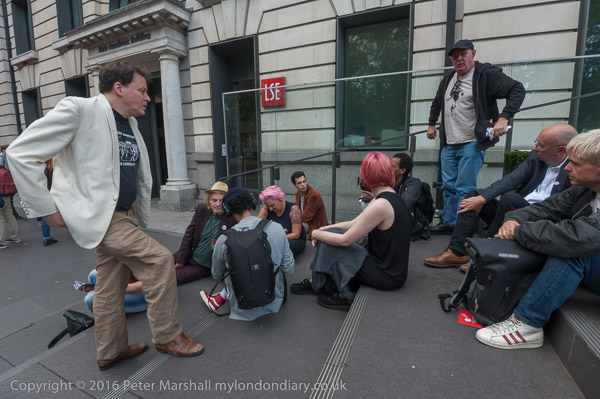
There was a lively open debate around ideas of the working class at lunchtime on the steps in front of the LSE building in Lincoln’s Inn Fields led by LSE Professor of Anthropology David Graeber and Martin Wright of Class War with contributions from others including LSE research fellow Lisa McKenzie and Class War’s Ian Bone.
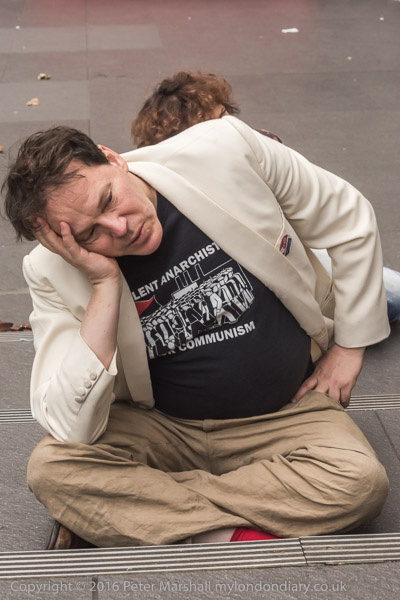
I arrived late, partly because the LSE then was a huge building site and the Facebook invitation to the event had included a map incorrectly suggesting it was taking place in Houghton Street, so unfortunately missed the some of the opening remarks by Graeber.
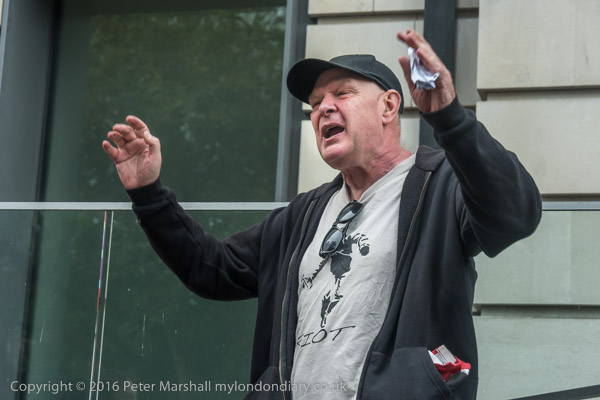
He was followed by Whitechapel anarchist Martin Wright, a working-class activist from East London who told us he was proud of his record of not working. He now regularly broadcasts his pithy comments on current affairs on the ‘Red and Black’ channel on You Tube.
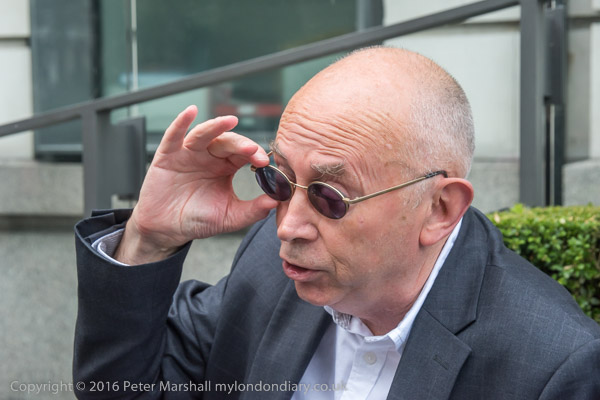
Ian Bone, the founder of Class War, once described by the gutter press as the ‘The Most Dangerous Man in Britain‘ gave a typically witty and thought-provoking contribution.
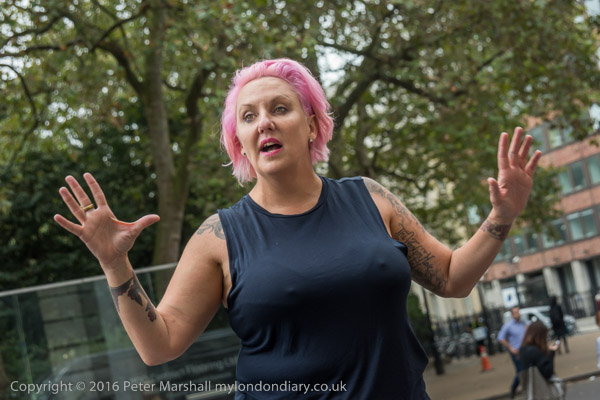
And of course Lisa McKenzie spoke at some length and depth, and there was a great deal of discussion among the main speakers, with contributions from many of those sitting around on the steps, mainly LSE students. I took a great many pictures some of which you can see on My London Diary, but think I managed to keep my mouth shut and listen rather than speak.
More pictures at Working Class debate at LSE Resist.
Simon Elmer of ASH indicts LSE
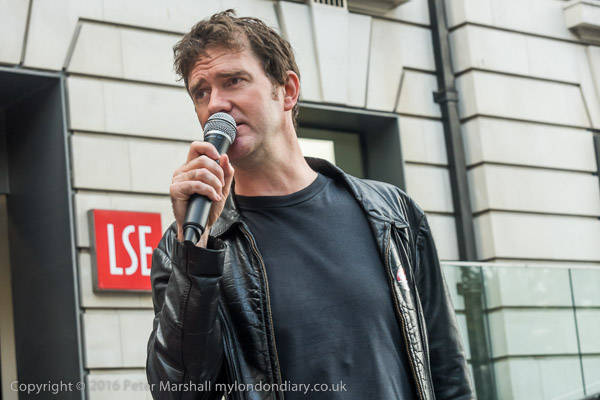
The following day I was back on the same steps to hear Simon Elmer of Architects for Social Housing (ASH) give a lengthy and detailed indictment, ‘The Intellectual Bloodstain’ on a report by a group of LSE academics on Kidbrooke Village, a development by Berkeley Homes and Southern Housing, on the site of a council estate which was demolished between 2009 and 2012.
The Ferrier Estate had been built for the Greater London Council in 1968-72 on the site of a former RAF base. The first section had five 12 storey towers and three years later a second section six more were added. The estate had around 1,900 flats.
When the GLC was abolished in 1986 for having opposed the Thatcher government it was a sad day for London in general, with the capital being left without its essential city-wide authority, something it has not yet recovered from despite the setting up of the GLA in 2000. But for the Ferrier estate in was even worse news as the estate was transferred to the Royal Borough of Greenwich.
Greenwich made Ferrier a sink estate and failed to maintain the estate properly; its population were markedly multi-ethnic, including many refugees while most of the rest of the borough’s estates were predominantly white.
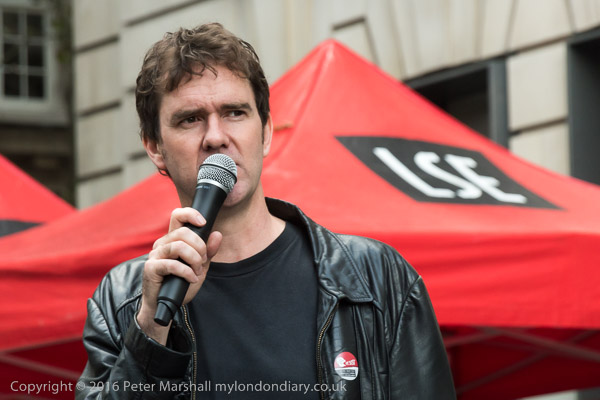
You can read Elmer’s talk in full on the ASH web site and it makes interesting reading. Perhaps the key fact is that the estate still had 1732 flats which were housing council tenants at social rents, but in the replacement Kidbrooke Village although there will be 4,763 new apartments, only 159 will be at social rent. Some of the others will be ‘affordable’, meaning at up to 80% of market rent, but that means completely unaffordable to those who previously lived there – or to almost all of the 15,000 on the council’s housing waiting list.
As a former member of Greenwich Council was quoted by Elmer as stating, ‘Ten years ago residents on the Ferrier Estate were told that they would have the right to come back. What Greenwich Council didn’t mention is that they would need to win the Lottery to do so.’
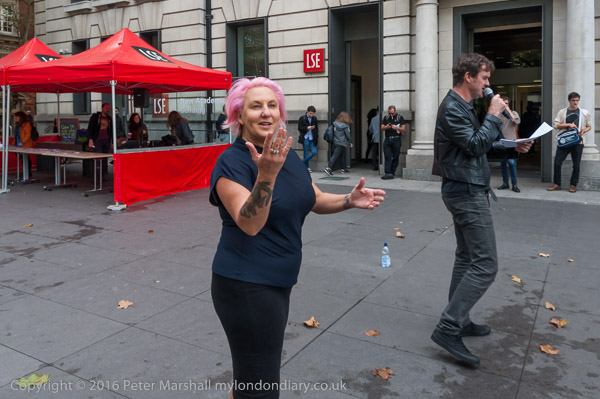
Elmer uses the case of Ferrier to ague about a key tropes behind the LSE produced report, the idea of ‘urban villages’ and also points out some of the omissions and inaccuracies of the report as well as attacking their use of inadequate and often misleading concepts such as ‘human scale‘, ‘unique identity‘, ‘social interaction‘ (which means going to shop at Sainsbury’s), ‘locally driven‘, ‘mixed communities‘ and more as well as pointing out some simple lies lifted directly from the developers’s marketing book.
His report points out “the white elephant standing in the middle of the living room of every one of these luxury apartments – that is, their complete failure to meet the housing needs of the local community” and went on to look more widely at housing issues in the UK before concluding his talk by convening a People’s Court for the indictment of the LSE Four, listing four charges and calling for their suitable punishment “in the name of Architects for Social Housing and on behalf of the former residents of the Ferrier Estate.” I think they were unanimously found guilty.
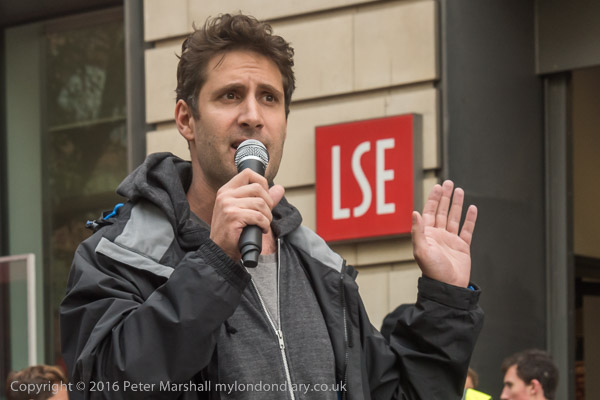
At the end of the meeting Petros Elia, General Secretary of the United Voices of the World trade union spoke briefly about the failure of LSE management to protect the interests of the LSE cleaners in outsourcing them to a cleaning contractor with no insistence on decent working conditions and conditions of service and inviting all present to a meeting later that do to discuss further action.
More pictures at Simon Elmer of ASH indicts LSE.
LSE Cleaners Campaign Launch
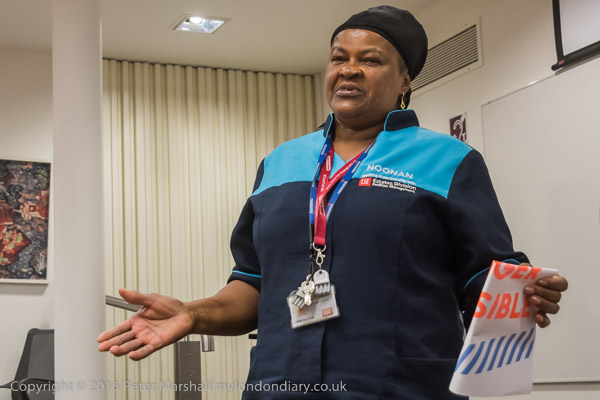
Later on Thursday I went to the meeting where cleaners at the LSE began their campaign for parity of treatment with other workers at the university.
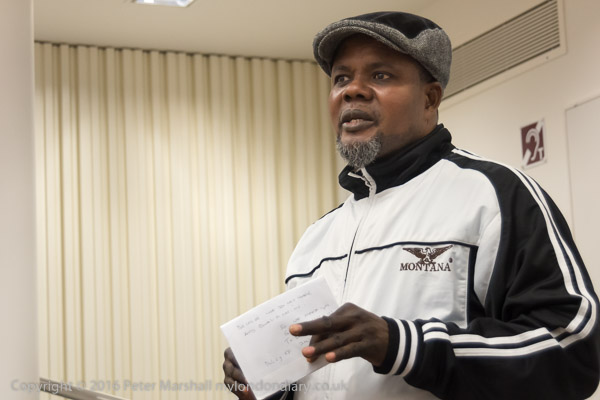
The cleaners, employed by Noonan on a LSE contract, are paid the London Living Wage, but have only the statutory minimum holidays, sick pay and pension contributions, while workers directly employed by the LSE have more generous terms. They also complain they have lost rest facilities, are not allowed in the canteen with other workers, exposed to dangerous chemicals, not allowed to use lifts to move heavy equipment between floors and are generally treated like dirt.
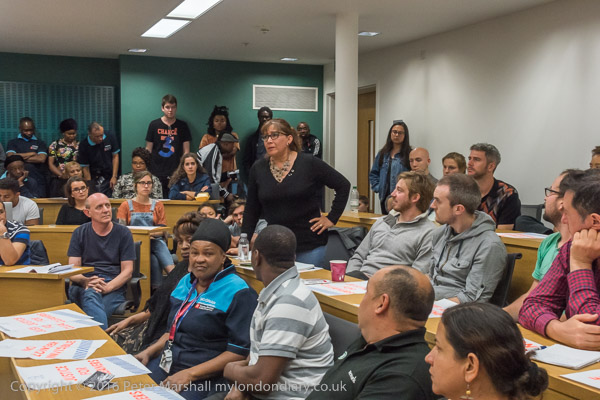
We were all shocked when one of the cleaners stood up and told how she had been sacked by Noonan after 12 years of service at the LSE. The UVW will fight her unfair dismissal as well as pursuing their other claims.
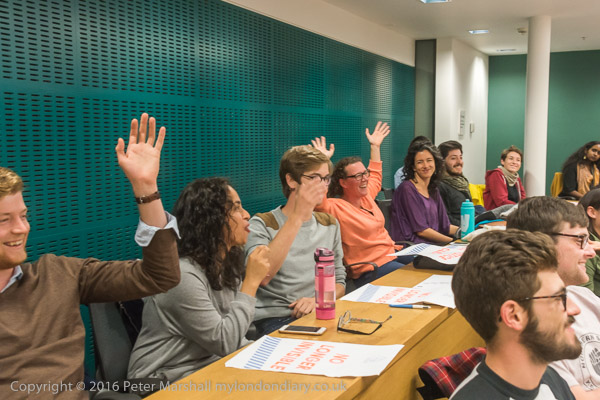
Others attending the meeting included most of the students from a new graduate course at the LSE on issues of equality, something the LSE has a long history of campaigning for outside of the institution but seemed rather blind to on its own campus. Support for the cleaners was expressed by the LSE Students Union General Secretary and by several LSE staff members, and Sandy Nicoll from SOAS Unison told the meeting about their 10 year fight to bring cleaners there in-house.
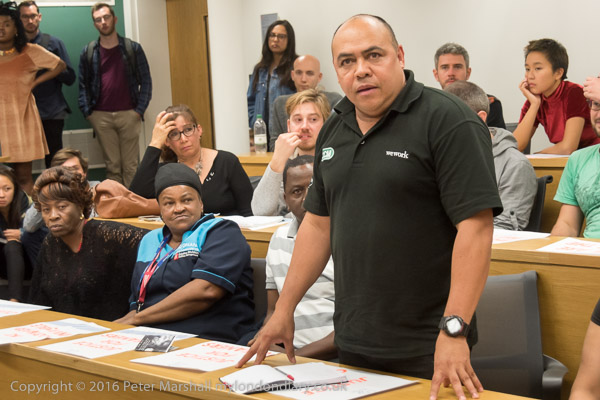
Several of the cleaners spoke in Spanish, and their comments were translated for the benefit of the non-Spanish speaking in the audience,
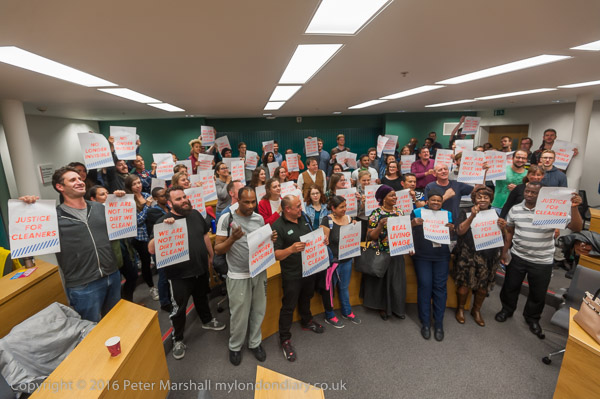
There were suggestions for further actions to improve conditions and fight the unfair redundancy, and I was to photograph some of these in the months that followed, eventually leading the them being taken back in-house as LSE employees in 2017.
More pictures at LSE Cleaners campaign launch.
